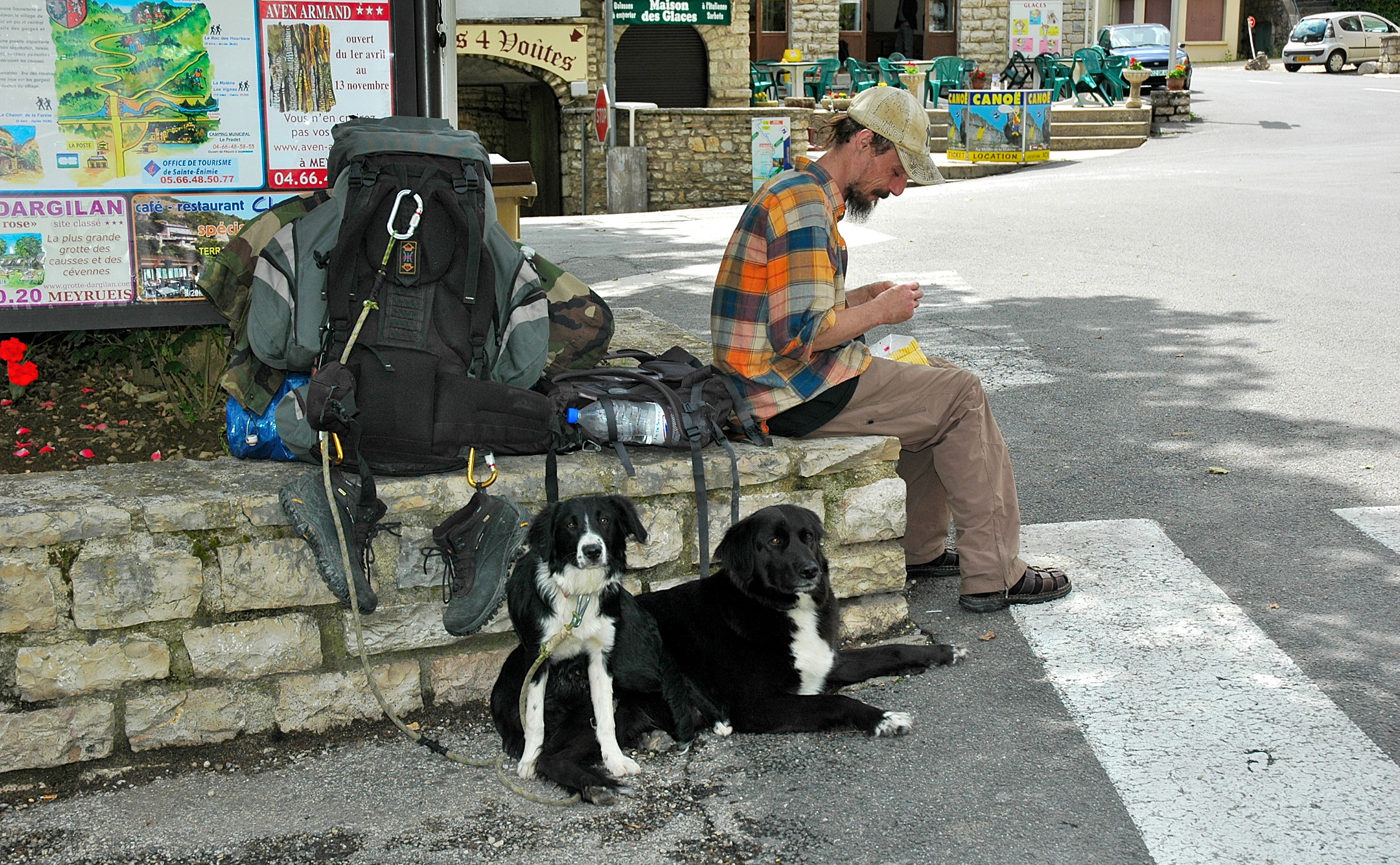LOZERE REVISITED

Janet Podolak
A stone town grows tinier beyond the hairpin turns of a one time goat path up a steep escarpment above the Tarn River Valley in France’s least populated area.
Loving Lozere: Least-populated part of France a great destination for solitude and long walks
My seatmate was losing it.
Trembling from head to toe, she was dripping with sweat and gasping for breath. I feared a stroke.
Instead, it was a full-fledged panic attack, brought on as our car climbed a twisting, 5 mph road from the Tarn River Valley below. The stone town we’d just left was becoming tiny beneath us.
When our driver was able to pull over and stop, our friend confided she was deathly afraid of heights. We still had miles to go, and turning back was not an option, so we suggested deep breaths, donning earbuds and listening to music with her eyes closed.
Embarrassed that we’d had to stop, she followed our advice and told us to continue.
The road, we learned, doesn’t even have a name. It follows what once was a path for sheep and goats that were driven each spring to the plateau above the river valley. The “so-called roads” winding across the plateau still above us would prove to be much the same.

Janet Podolak
A hiker takes a break from the Robert Louis Stevenson Trail in Lozere to rest his feet and his dogs in a nearby village.
Perhaps we should have followed the lead of Robert Louis Stevenson and hired a donkey.
In 1878, years before writing “Treasure Island,” Stevenson crossed 136 miles of Lozere in 12 days as a donkey carried his gear. Although in poor health, he chose to trek the area because it was France’s last bastion of Protestantism, similar to that of his hometown in Scotland. During the trek, he bonded with his donkey, Modestine, and later wrote “Travels With a Donkey in the Cevennes,” which became the first book of its kind and is said to have later inspired both John Steinbeck and Ernest Hemingway.

Janet Podolak
The Robert Louis Stevenson Trail follows the route taken in 1878 when the Scottish author crossed Lozere on foot with a donkey to carry his gear.
These days, folks like you and me can do a self-guided walk and even hire a donkey as we follow the Robert Louis Stevenson Trail through the region. Some inns that are a part of the association formed to support the Stevenson Trail provide hikers with a bed for the night and a place for the donkey, complete with hay for it to eat.
To me, it seems like an ideal way to slow down and appreciate the unspoiled terrain in what is the most sparsely populated department of France. Here you’ll still find herds of sheep crossing path-like roads, outdoor communal bread ovens at the edge of minuscule villages and mysterious and ancient granite standing stones scattered across the flower-filled plateau.

Janet Podolak
A scallop shell, the mark of the Way of St. James, indicates a source of potable water for pilgrims trekking across the Lozere to Santiago in Spain.
Some of the trails were mapped by the Romans centuries ago. Part of the Way of St. James, which takes pilgrims from throughout Europe to Santiago across the border in Spain, passes through here.
Until we began climbing out of the Tarn River gorge, where our colleague had her panic attack, we thought the road winding along the river was challenging. Cut into the rock wall with tunnels, it sometimes was so narrow our driver needed to pull over so oncoming trucks could squeeze past.
After passing through a stone archway and crossing a mossy bridge in front of a waterfall, we arrived at Chateau de la Caze, a castle-like home built in 1492 when Columbus was busy discovering America. Complete with turrets and a moat, the chateau today is a four-star hotel with an acclaimed restaurant.
Retreating to my guest room to sleep off my jet lag, I swung open my windows and their wooden shutters so I could fall asleep listening to the river’s gurgling serenade. I’d reserved a river tour for the next day to see for myself how the Tarn has shaped this area over the centuries.

Janet Podolak
Chateau de la Caze, built in 1492, is now a four-star hotel. This guest building is in the shadow of the cliffs rising from the Tarn River.
Until late in the 19th century, travel through this rugged gorge was done only by boat. The old wooden boats that had carried trade goods between riverside villages were converted to give boat rides to visitors. Some of the once-isolated villages are now privately owned and made into venues for modern travelers.
The nearby village of Saint-Guilhem-le-Desert, founded in 804 by Guilham, a member of Charlemagne’s court, is a well-known stopover for Way of St. James pilgrims. Pilgrims wear a scallop shell to identify themselves, and places that offer them meals, a place to sleep or fresh water for their canteens also sport a scallop shell. The grooves of the shell are a handy scoop for water but are also a metaphor for the many routes followed to reach a single destination — Santiago.
The abbey of Saint-Guilhem-le-Desert holds a jeweled reliquary with a piece of the True Cross given by Charlemagne. Each May 3, it is carried through the village in a procession and visitors buy cookies shaped into cross replicas said to protect against lightning.
@JPodolakatwork on Twitter
The trail — suitable for families as well as very fit, hardcore adventurers — is ideal for those who like the combination of nature and solitude. Tour operators can provide advice. Information, videos and music to browse by can be found at en.lozere-tourisme.com.



Recent Comments